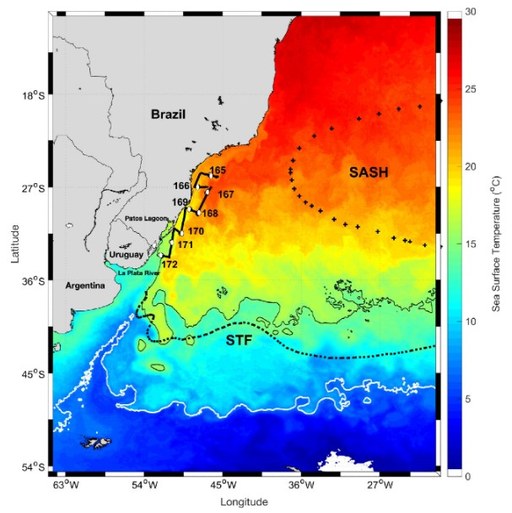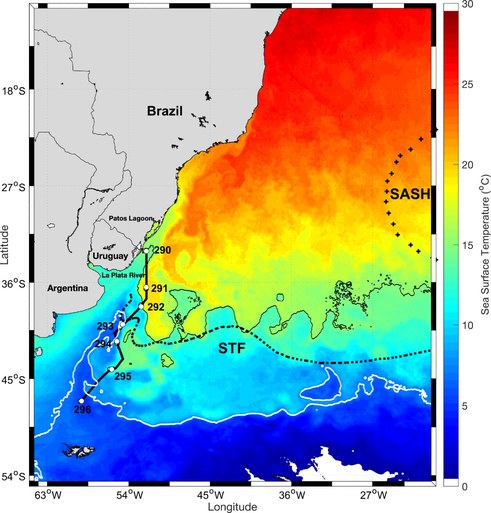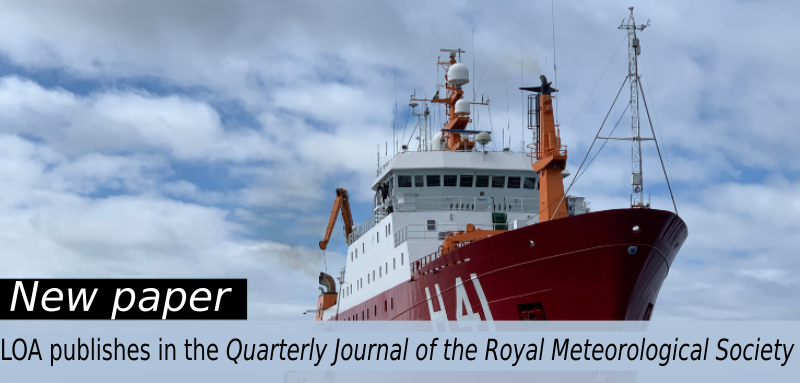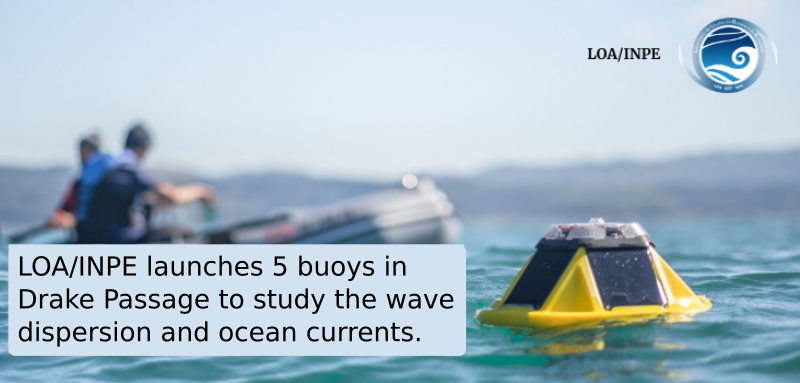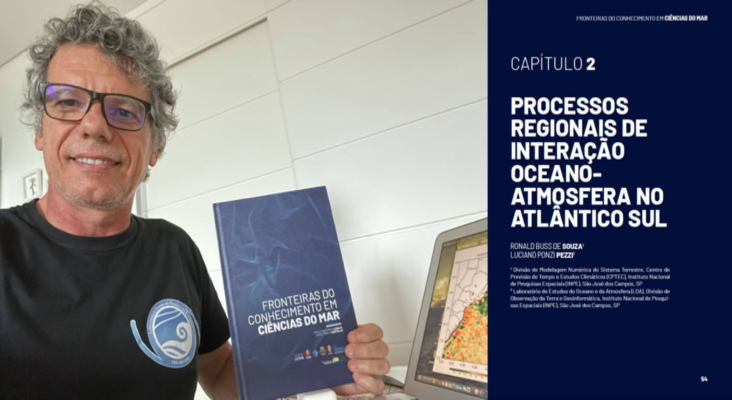Article published at Quaterly Journal of the Royal Meteorological Society (2020) – Observations of air–sea heat fluxes in the southwestern Atlantic under high‐frequency ocean and atmospheric perturbations by DIOTG / INPE researchers: Marcelo Santini, Ronald Buss Souza, Luciano Pezzi, and Sebastiaan Swart, from the University of Gothenburg (Sweden), provides important data on turbulent flows in the southwestern Atlantic Ocean that allows for improved weather and climate simulations in South America. Marcelo Santini is part of the LOA team and is a postdoctoral fellow at the Postgraduate Program in Remote Sensing – INPE and summarizes the work below:
The turbulent heat fluxes between the ocean and the atmosphere were calculated from micrometeorological data obtained in situ at high frequency during two survey cruises in the southwestern Atlantic Ocean (SWAO) in June 2012 and October 2014. Cruises sampled two distinct and dynamic areas: the Brazil-Malvinas Confluence (CBM) and the Southern Brazil Continental Shelf (SBCS). The vortex covariance (VC) method was used to estimate the sensible and latent heat fluxes. This article compares these new high-frequency heat fluxes estimates with bulk parameterizations, a technique widely used by the scientific community, in the same place and time independently onboard ships. When comparing the CV and the time series estimated by bulk, the sensible heat fluxes showed a good agreement in their magnitude and variability, with small biases (generally < 20 W.m-2) in both SWAO study areas. However, comparisons of latent heat fluxes showed large biases ranging from 75 W.m-2 to 100 W.m-2 at SBCS and CBM, respectively. These biases have been associated with high-frequency environmental disturbances in the atmosphere or ocean, most of which are related to wind gust events, significant differences between air and sea temperatures, and intense horizontal gradients of sea surface temperature ( TSM). The rapid changes in atmospheric conditions were mainly related to the passage of synoptic systems in the two study areas. The significant differences between air and sea temperatures were linked primarily for sea surface characteristics in the CBM and SBCS regions, where oceanographic fronts with intense horizontal gradients of TSM are located. These results can improve weather and climate simulations from mid to high latitudes of South America and the Atlantic Ocean. This region is largely influenced by SST patterns combined with the frequent propagation of transient atmospheric systems.
